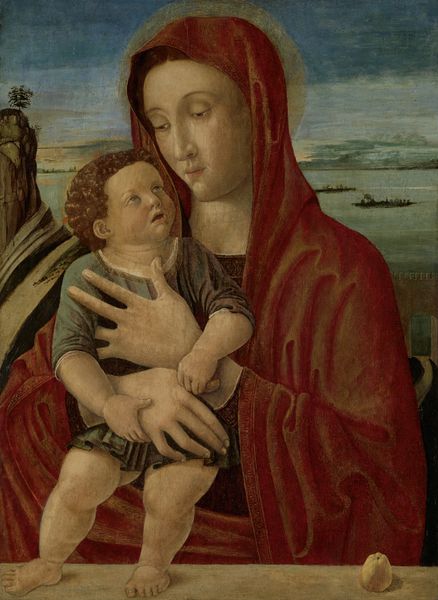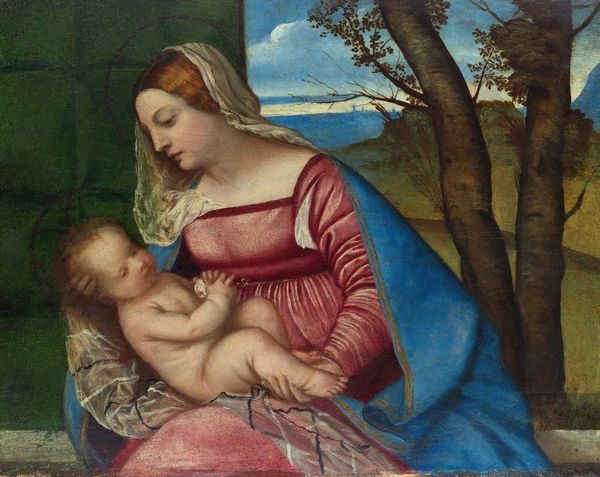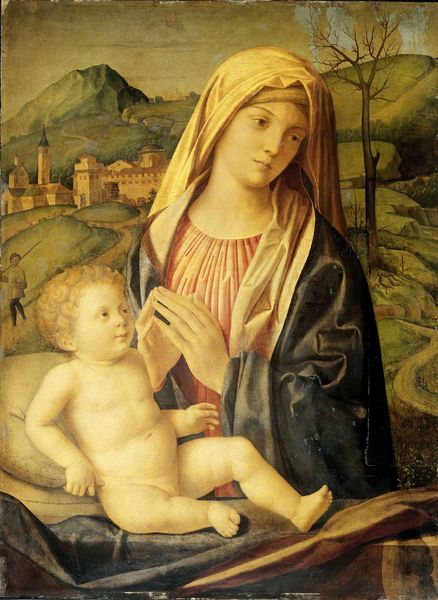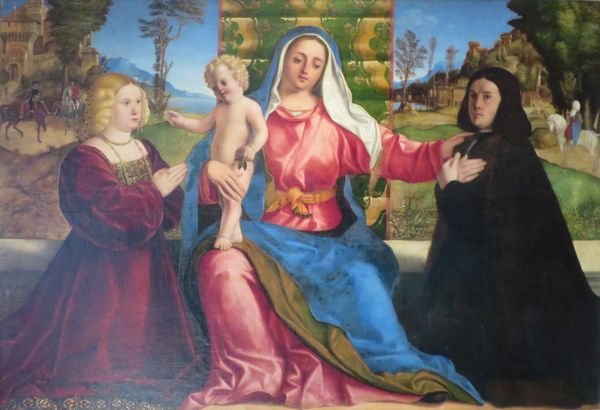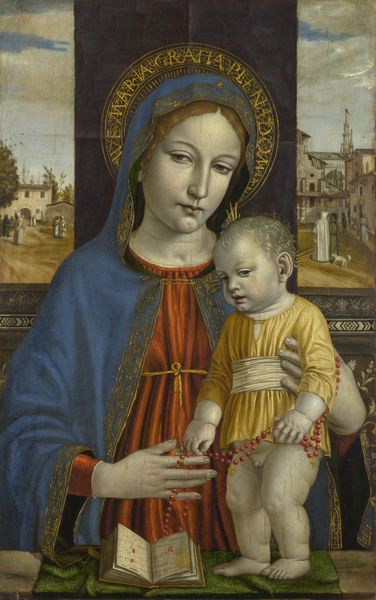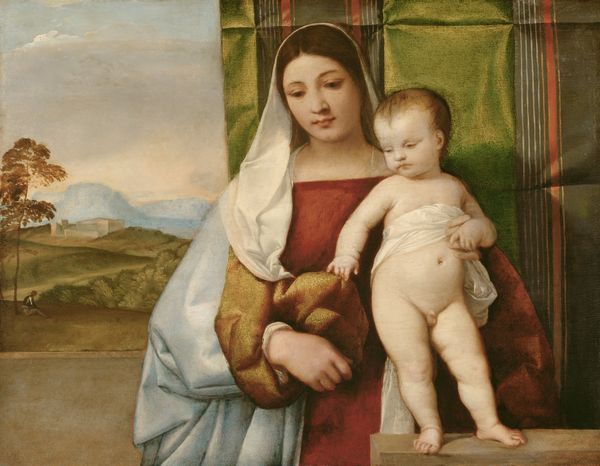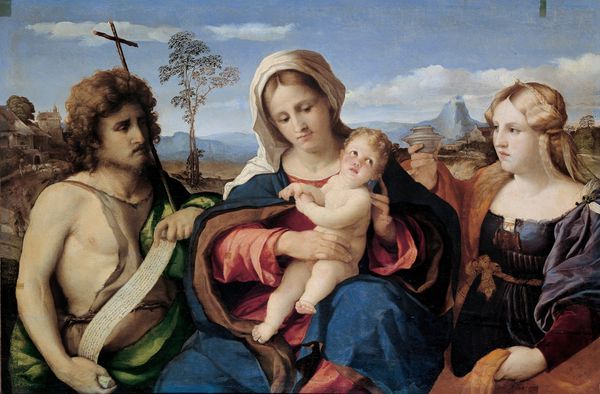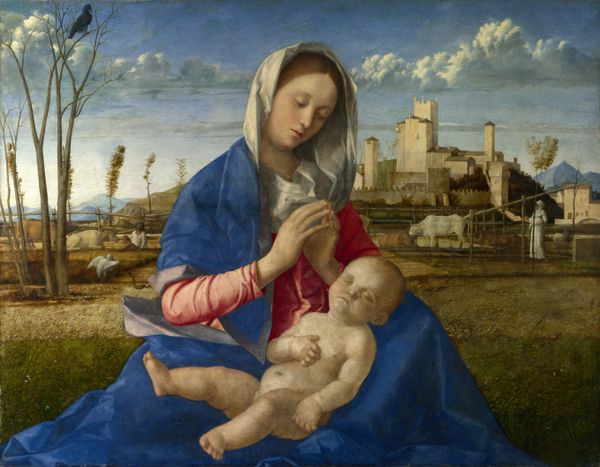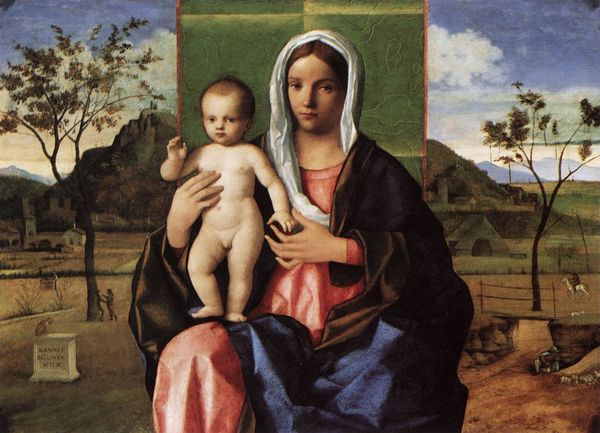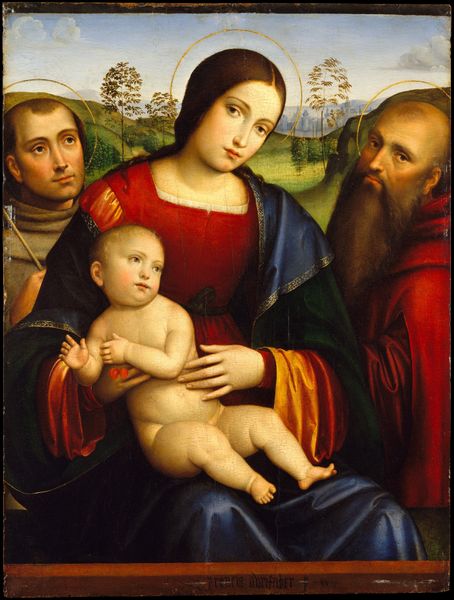
The Virgin and Child with a Male and a Female Donor 1485 - 1531
0:00
0:00
tempera, painting, oil-paint
#
portrait
#
tempera
#
painting
#
oil-paint
#
landscape
#
figuration
#
oil painting
#
history-painting
#
italian-renaissance
#
early-renaissance
Dimensions: 80 cm (height) x 114 cm (width) (Netto)
Vincenzo Catena painted "The Virgin and Child with a Male and a Female Donor" in Venice, sometime around 1520, using oil on canvas. This devotional image speaks to the social currency of art in the Republic. Works such as this one reveal the cultural function of art as a conduit between the earthly and the divine. The male and female figures in the foreground are likely the patrons who commissioned the work, their inclusion points to the ways wealthy individuals used art to express their piety and status. We might ask: in what ways did these images serve a social function, both for the patrons and the broader community? Did it reinforce the social hierarchy? Archival sources, such as letters, contracts, and inventories, provide valuable insight into the social and economic context in which such paintings were produced, revealing the complex network of relationships between artists, patrons, and institutions. With this knowledge, we can appreciate the depth of meaning embedded in this image and in art’s dialogue with its time.
Comments
No comments
Be the first to comment and join the conversation on the ultimate creative platform.
